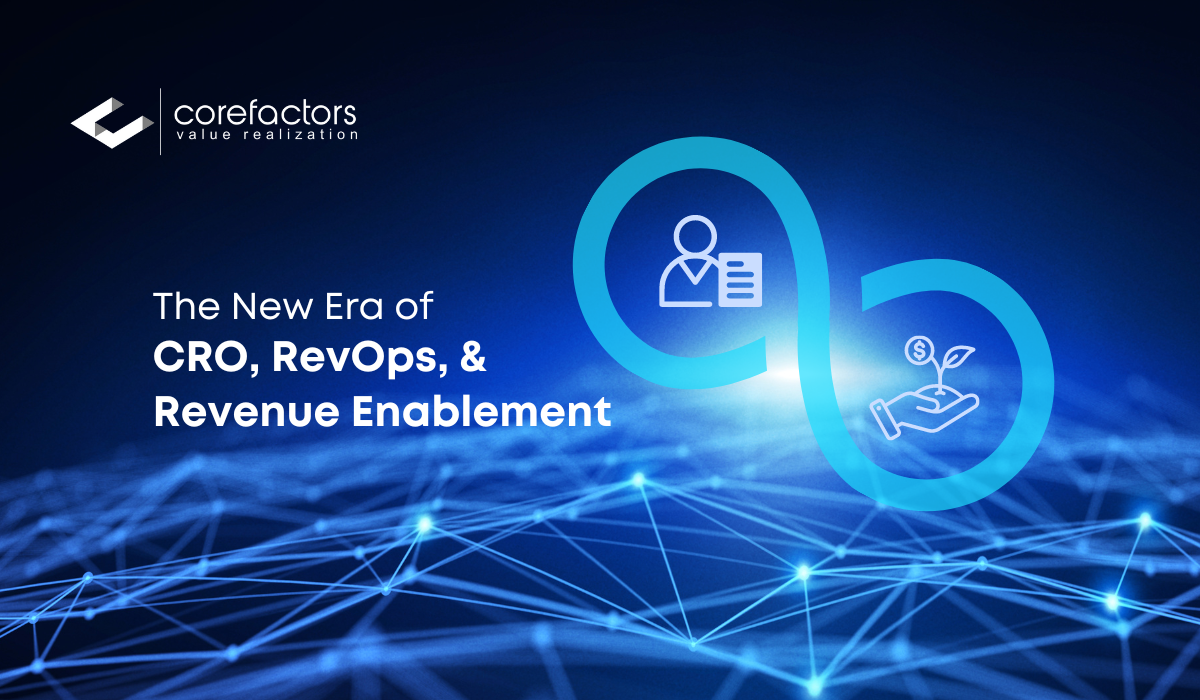
As the pace of change accelerates, businesses are increasingly rethinking their strategies and organizational structures. A recent study by PwC revealed that 45% of CEOs are uncertain about the longevity of their current strategies, a significant increase from just a year ago. This uncertainty is driving a major trend for 2024: restructuring around revenue-generating and go-to-market teams.
The days of isolated departments are numbered as businesses move toward a more integrated approach to drive growth. Emerging roles like Chief Revenue Officer (CRO), Head of Revenue Operations (RevOps), and Revenue Enablement are becoming central to this transformation. But why is this shift happening? It is because the traditional excuses of “that’s not my department” are no longer viable in today’s interconnected business environment.
Here’s a deep dive into the key elements of this revenue revolution and five essential considerations for businesses looking to adapt.
1. The Rise of the Chief Revenue Officer (CRO)
The role of the CRO is gaining significant traction, with LinkedIn reporting a 60-70% increase in CRO job postings. This surge underscores the growing recognition of the CRO’s importance in bridging gaps between sales, marketing, and customer success. , According to Forbes, companies with a CRO on board see a 10% boost in revenue growth compared to those without. The CRO acts as the strategic linchpin, ensuring that all revenue-generating functions are aligned towards shared objectives. This alignment is crucial in overcoming historical misalignments in strategy, key performance indicators (KPIs), culture, and communication.
2. The Revolution of Revenue Operations (RevOps)
RevOps is quickly becoming the essential function of the year, tasked with unifying data, tools, and processes across sales, marketing, and customer success. This role is critical in dismantling organizational silos and creating a cohesive operational framework. For companies considering a RevOps team, a practical first step is to audit existing processes and tools to identify inefficiencies. Are your systems integrated enough to provide real-time data and analytics to all relevant teams?
3. From Sales Enablement to Revenue Enablement
The concept of Revenue Enablement takes a broader view of the customer journey, focusing on equipping all customer-facing teams to drive revenue at every touchpoint. This approach transcends traditional sales enablement by aligning marketing, sales, and customer success to deliver a unified customer experience. The transition from sales-specific kick-offs to comprehensive go-to-market team kick-offs fosters collaboration and sparks valuable “ah-ha” moments across departments.
4. Breaking Down Organizational Silos
Organizational silos are akin to dealing with a separated couple—communication breaks down, and opportunities are missed. Breaking down these barriers starts with small, actionable steps. Consider instituting monthly all-hands meetings or appointing cross-functional teams for specific projects. As the new year approaches, think about using your annual kick-off to reinforce this collaborative mindset.
5. Leveraging Technology for a Seamless Customer Experience
In today’s digital landscape, customers demand consistent and personalized experiences across all interactions. Despite this, many organizations still grapple with technology silos, with sales and marketing teams often using disparate CRM systems. Salesforce’s State of Sales report highlights that high-performing teams are 2.3 times more likely to utilize integrated technology solutions. A unified CRM system serves as the foundation for delivering a seamless customer experience, enabling businesses to enhance satisfaction and build loyalty.
Conclusion: Embracing the Revenue Revolution
The emergence of roles like CRO, and RevOps Analyst is more than a passing trend—it’s a crucial evolution for businesses striving for sustained growth and exceptional customer experiences. The key to thriving in this new era lies in breaking down silos, fostering cross-departmental collaboration, and leveraging advanced technology. Start with small, manageable changes, continuously measure progress, and adapt based on data-driven insights. The revenue revolution is here, and it’s reshaping the future of business.











